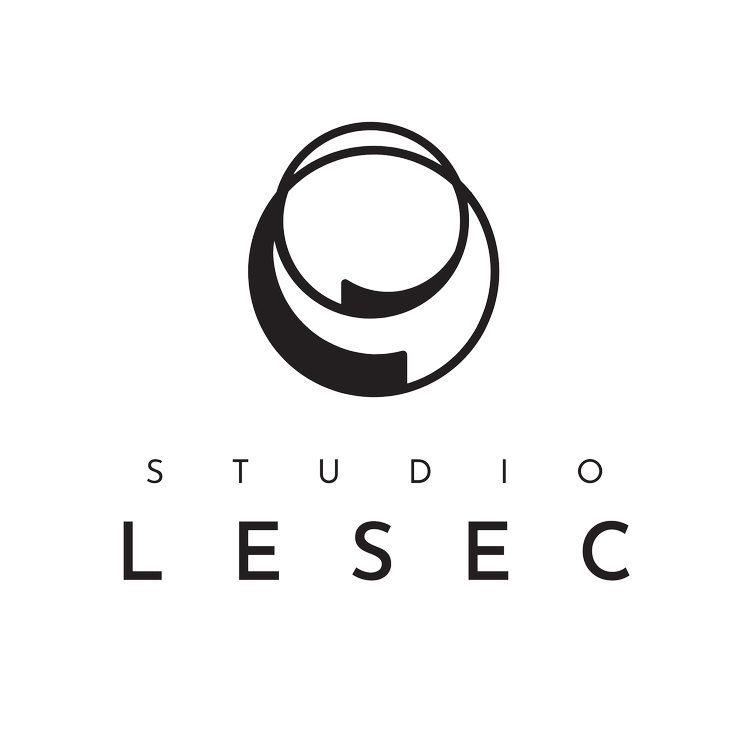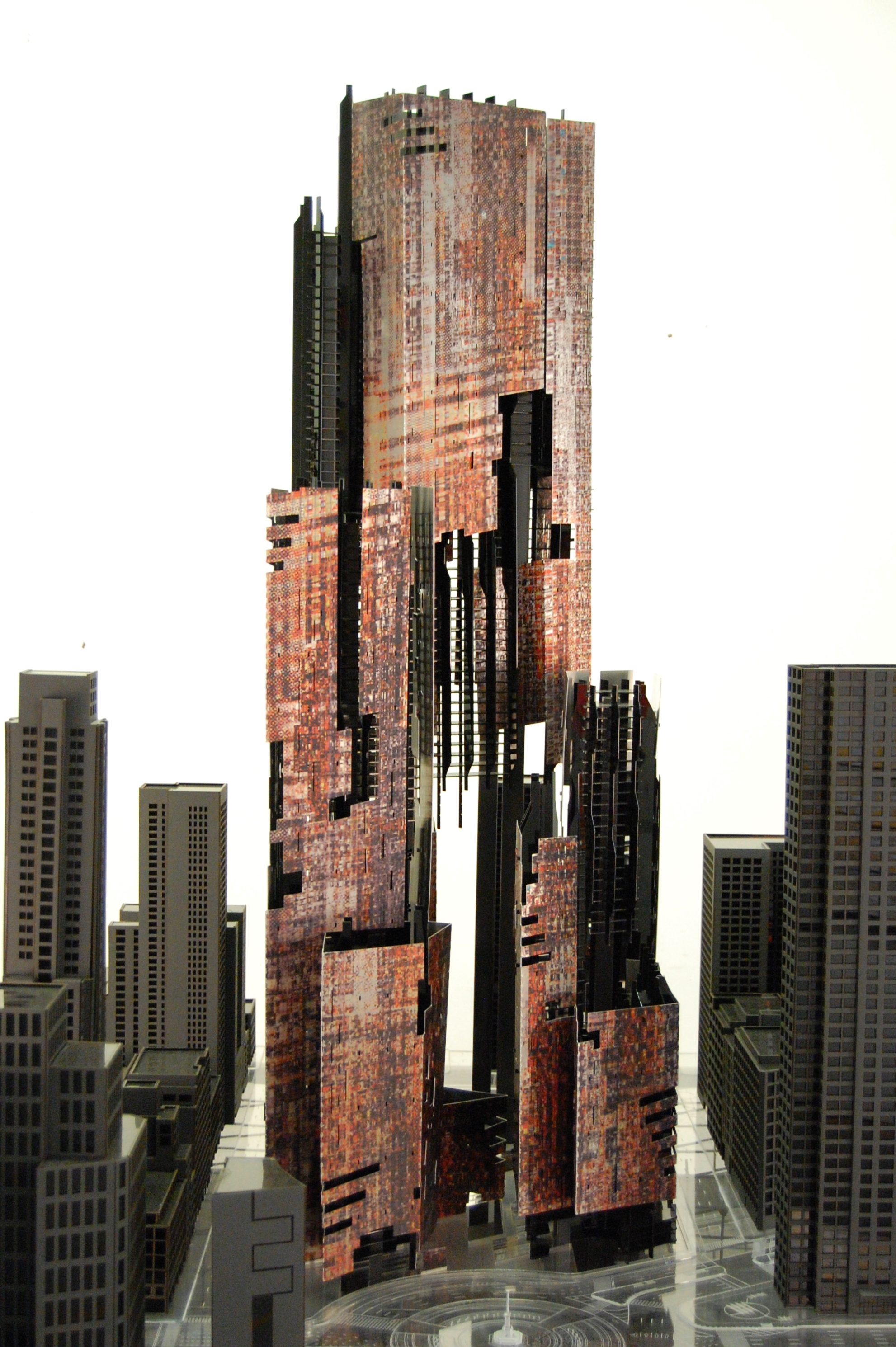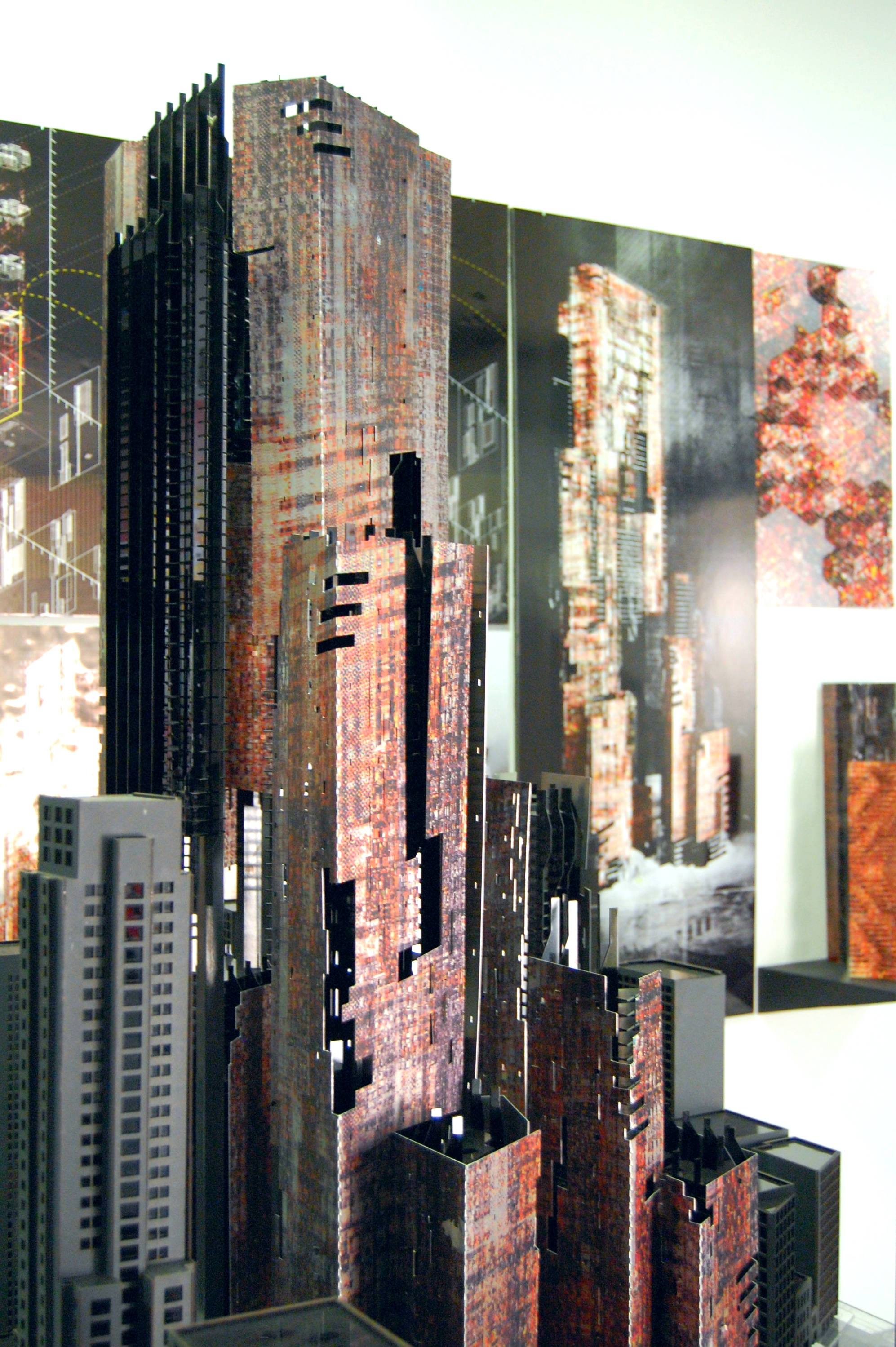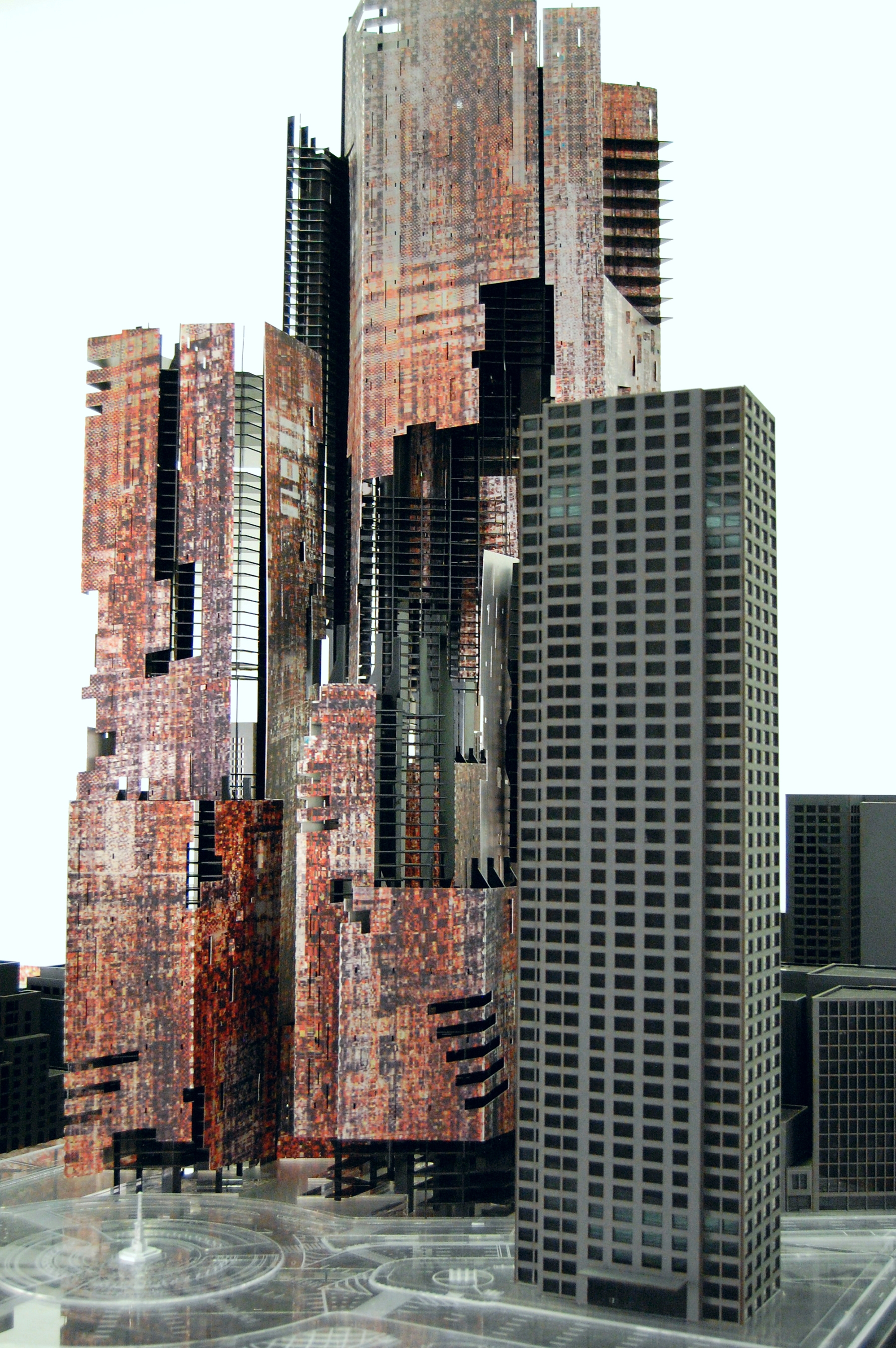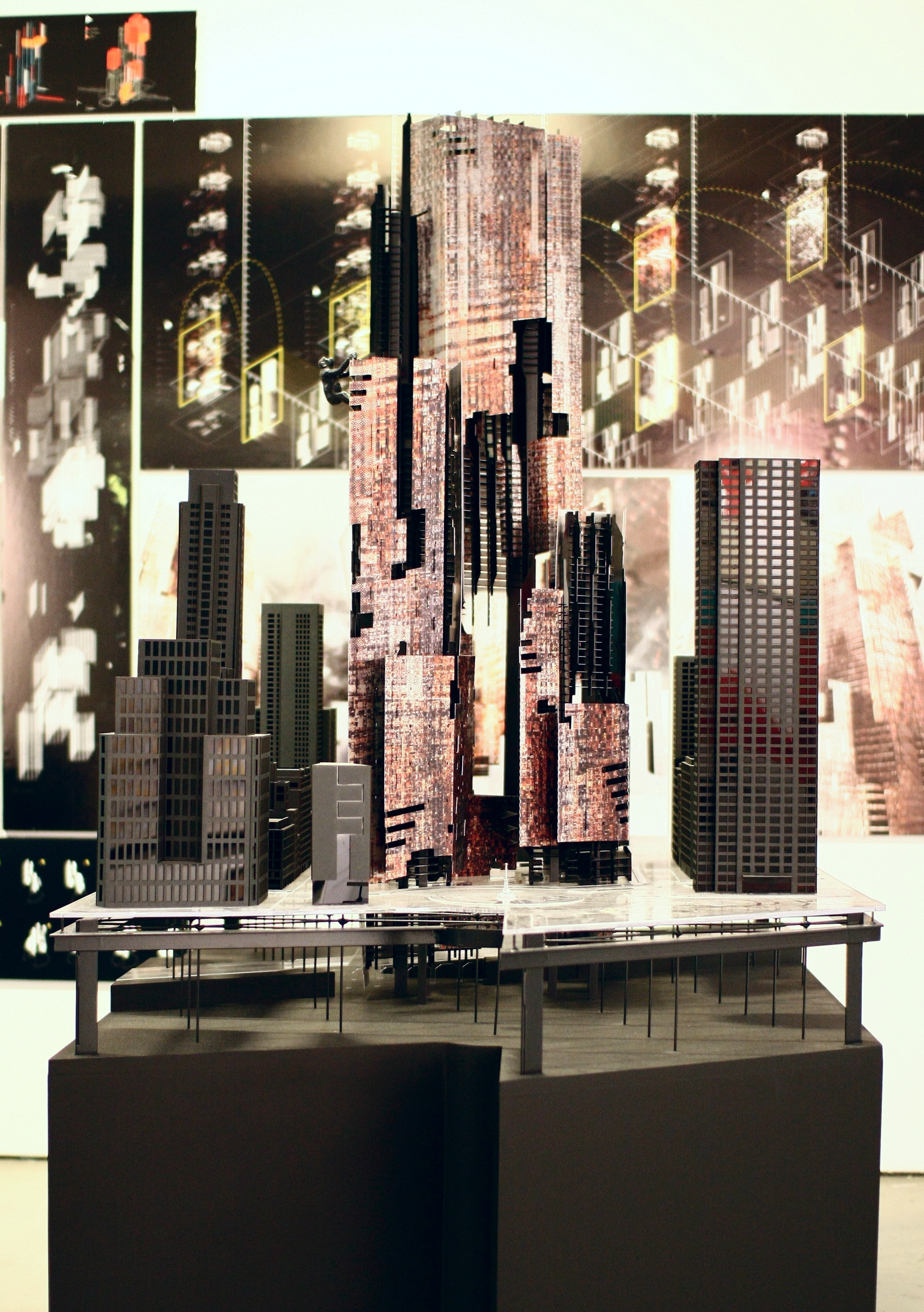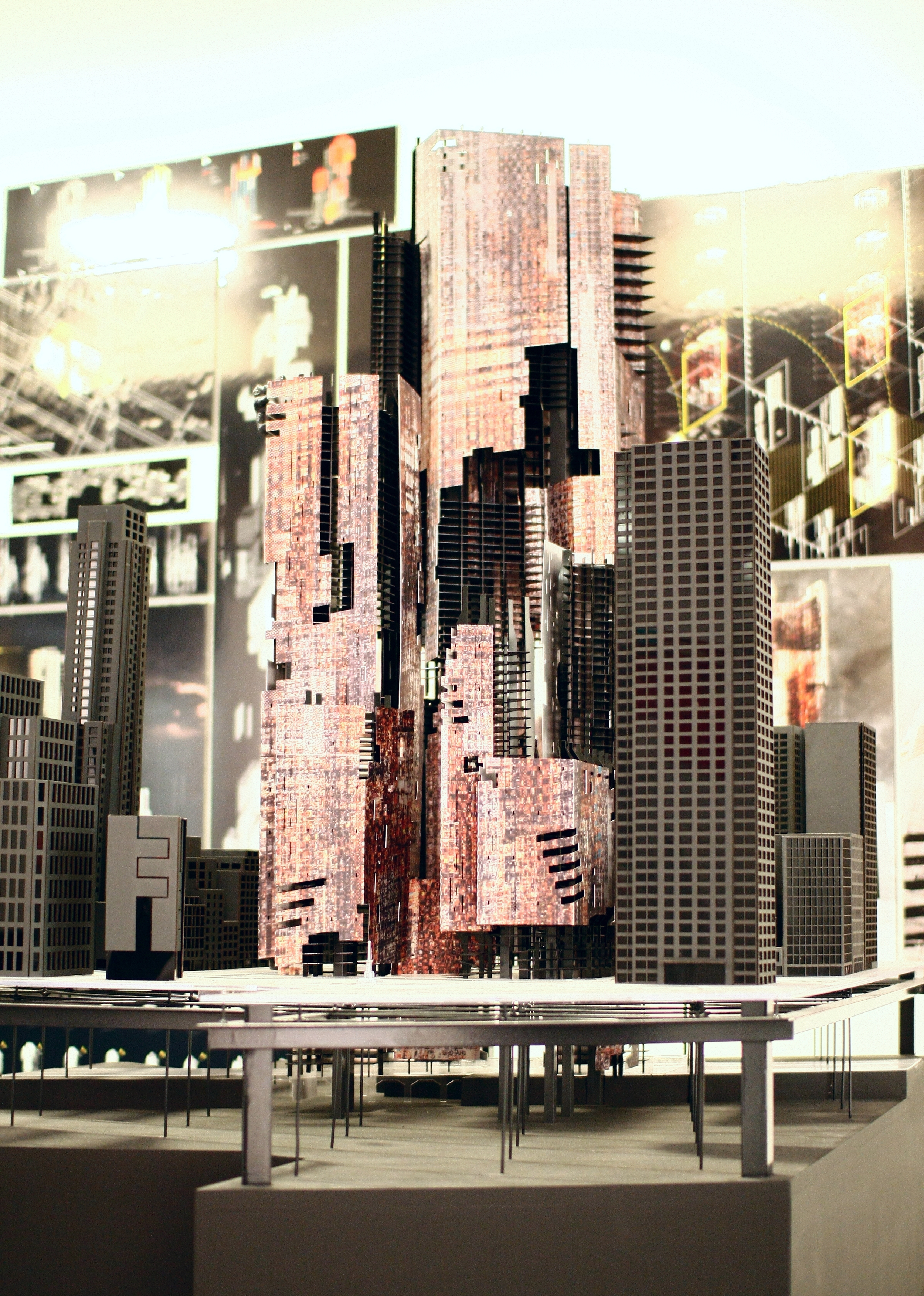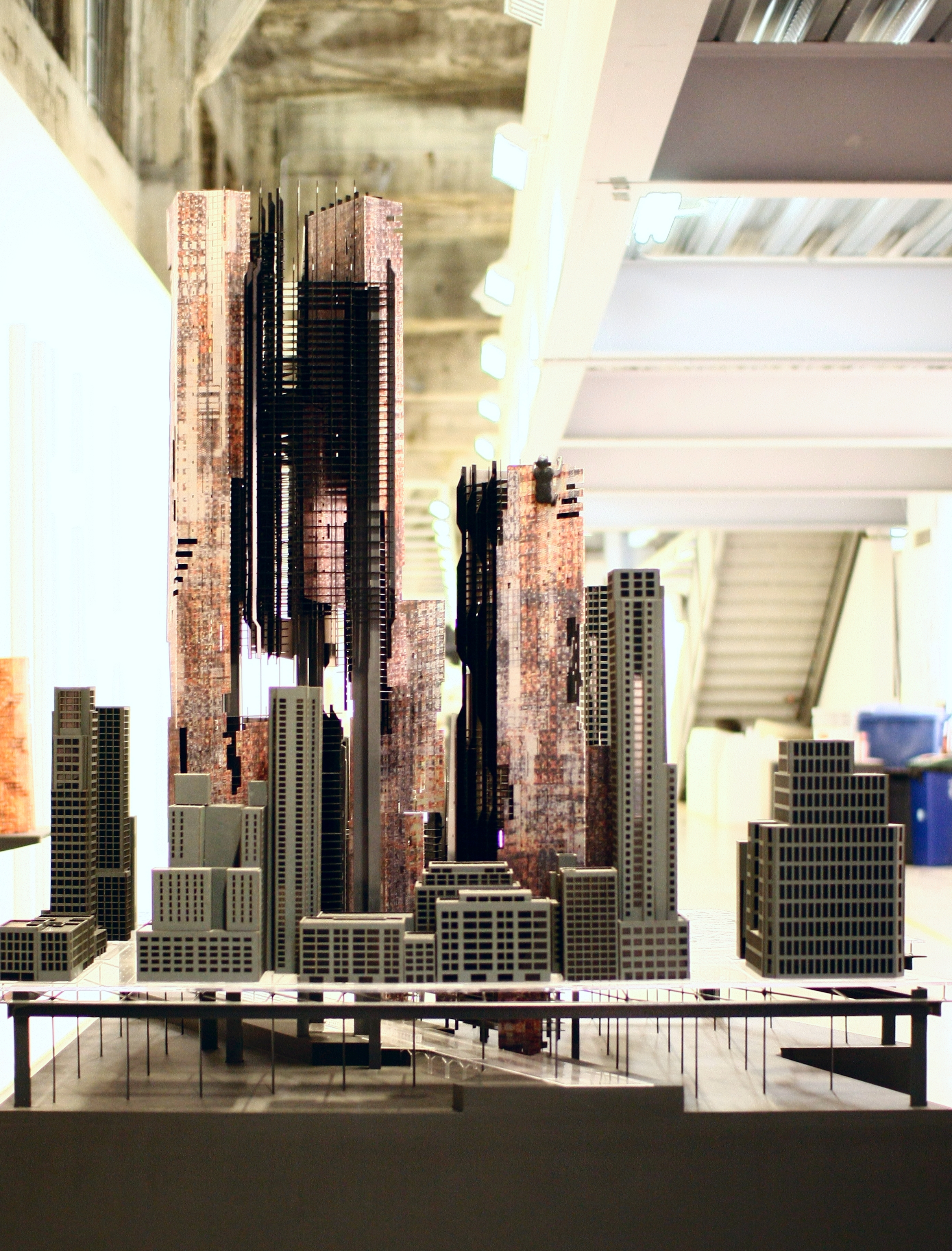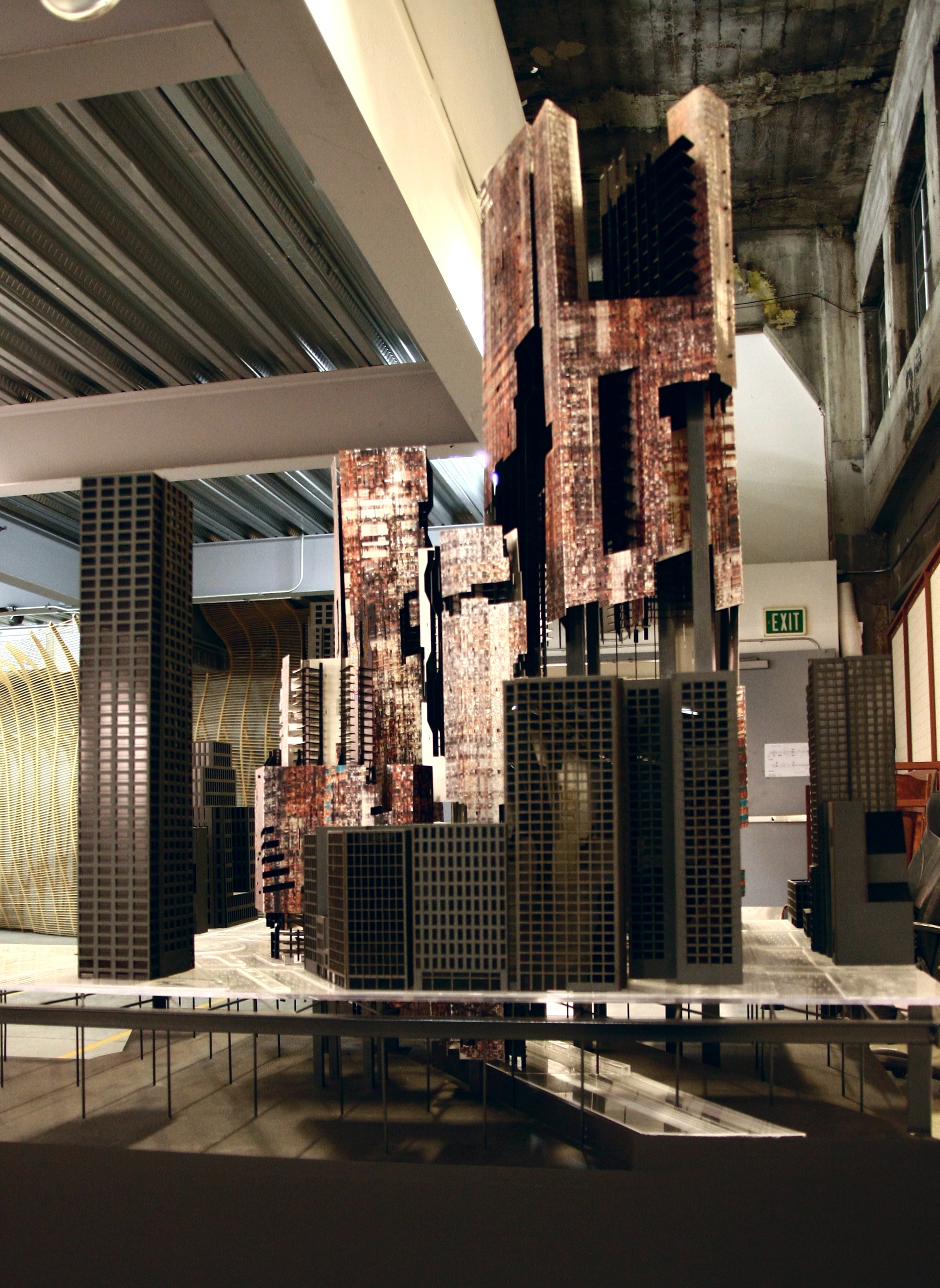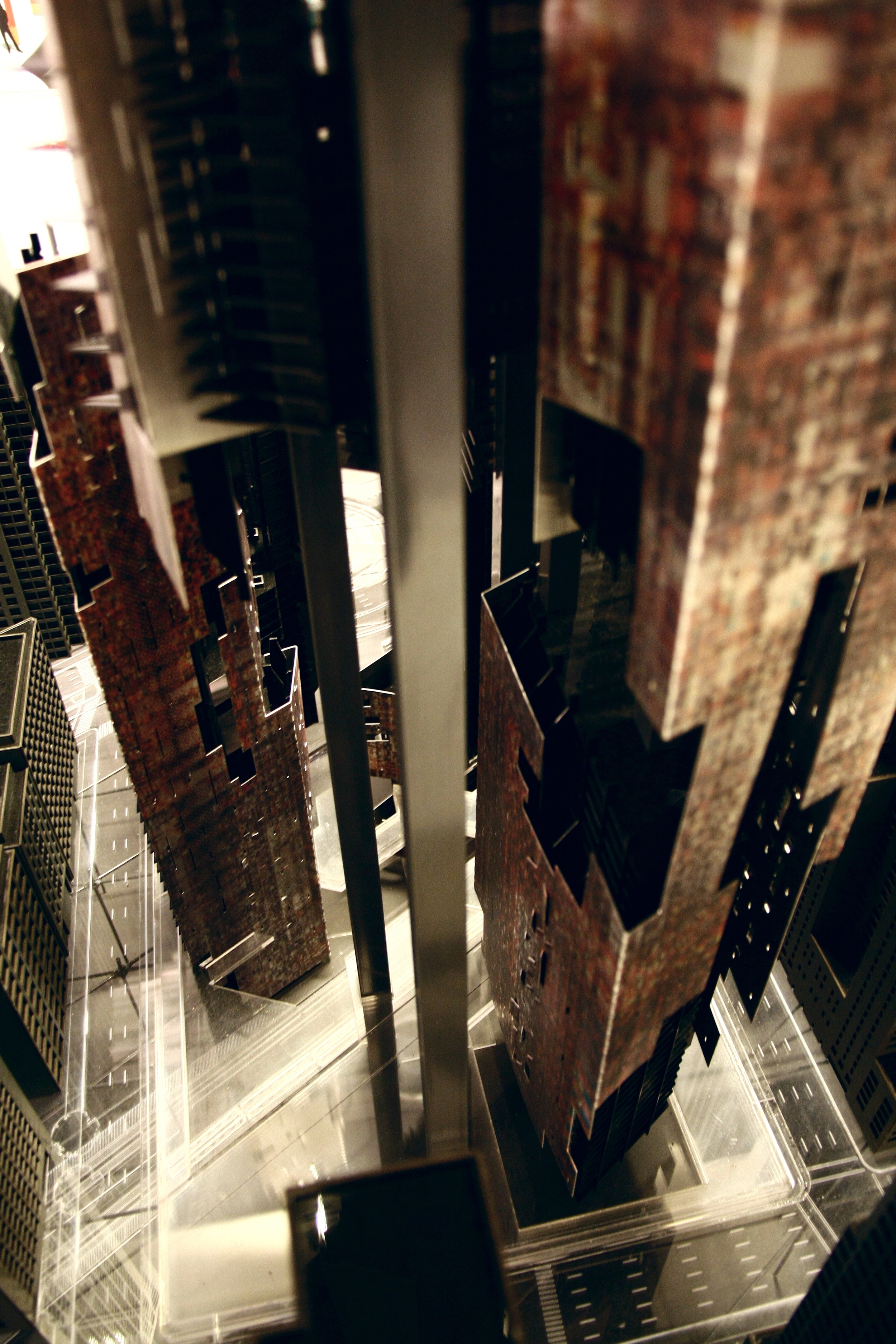This thesis investigates the perception of figuration and void within a complex field condition. The strategies we’ve employed oscillate between the 2D and 3D as a means of augmenting the legibility of volume and at other times subverting this perceptual reading.
thesis advisors
dwayne oyler / volkan alkanoglu
collaborative work
jacques lesec / sean markle
The drawings are meant to engender a magnitude of depth through a maniacal layering of information and representational techniques. At a distance, the richness of color and graphic frontality of the drawings act as initial avenues of ingression by which the viewer can perceive the drawing. Luring them closer, the immediacy of the initial reading is unsettled by a more quantifiable layer, exposing highly detailed technical aspects about the drawing’s assemblage.
The drawings operate on the fringe, providing a comprehensive depiction of process, technique, and narrative in an effort to sponsor multiple interpretations. This is not to be confused as a project of the nostalgic, but rather a reassessment of conventional output in favor of a more holistic representational strategy. They attempt to encapsulate the entropic nature of the design’s topological variation, the ephemeral qualities inherent with the blur, the complex connectivity between co-planar surfaces, the interrelation of elements across multiple layers, the logistical consideration of its fabrication, all the while exposing the potential for the generation of three-dimensional space.
_field condition
Study Models
Over the course of the project, we developed a catalogue of perceptual devices derived from a series of analytical models and drawings. The models began with an interest in developing a complex field and breaking it into its constituent parts. Masking, expanding, and highlighting the edge became techniques that proved useful at both subverting or confounding a range of perceptual readings: from clear volumetric legibility, to a feathered edge, to the complete erasure of volume all together.
Final Model
The model was built from an assortment of materials utilizing a variety of custom fabrication techniques. The MDF box was CNC milled to accommodate the custom steel “foundation” to be fastened discretely within the base. 1/4” clear acrylic was then laser cut to highlight the site plan of Columbus Circle illustrating Central Park adjacent to the circle. The surrounding context buildings were built from 1/8” black acrylic and clad with laser cut illustration board veneer. The three towers that comprise our design concept were built from 1/8” black acrylic supported by variable powder-coated aluminum tube reinforced within the model box. After numerous test prints, the featured cladding on the three buildings was laser cut from 4’x8’ aluminum sheet metal and outsourced to Warner Bro’s where it received its graphic pattern on their large format ultra-violet plotter.
_model scale: 1/300
_site plan
We’ve tested our strategies on a three tower scheme located near Columbus circle at the southwest corner of Central Park in Manhattan.
_figuration diagram
_program/circulation diagrams
_section
Renderings
The project looks to challenge our conventional understanding of mass and void within the urban context. We see the city as a collection of individual instances of iconographic volumes which attempt to further differentiate themselves from each other. The purpose of this thesis is intended to disrupt this self-idolatry by producing moments of visual synthesis, bringing perceptual integration back into Manhattan’s otherwise indiscriminate commercial skyline. The analysis inevitably invites new perception of mass/mass as well as mass/void relationships.
_rendering
_rendering
_rendering
